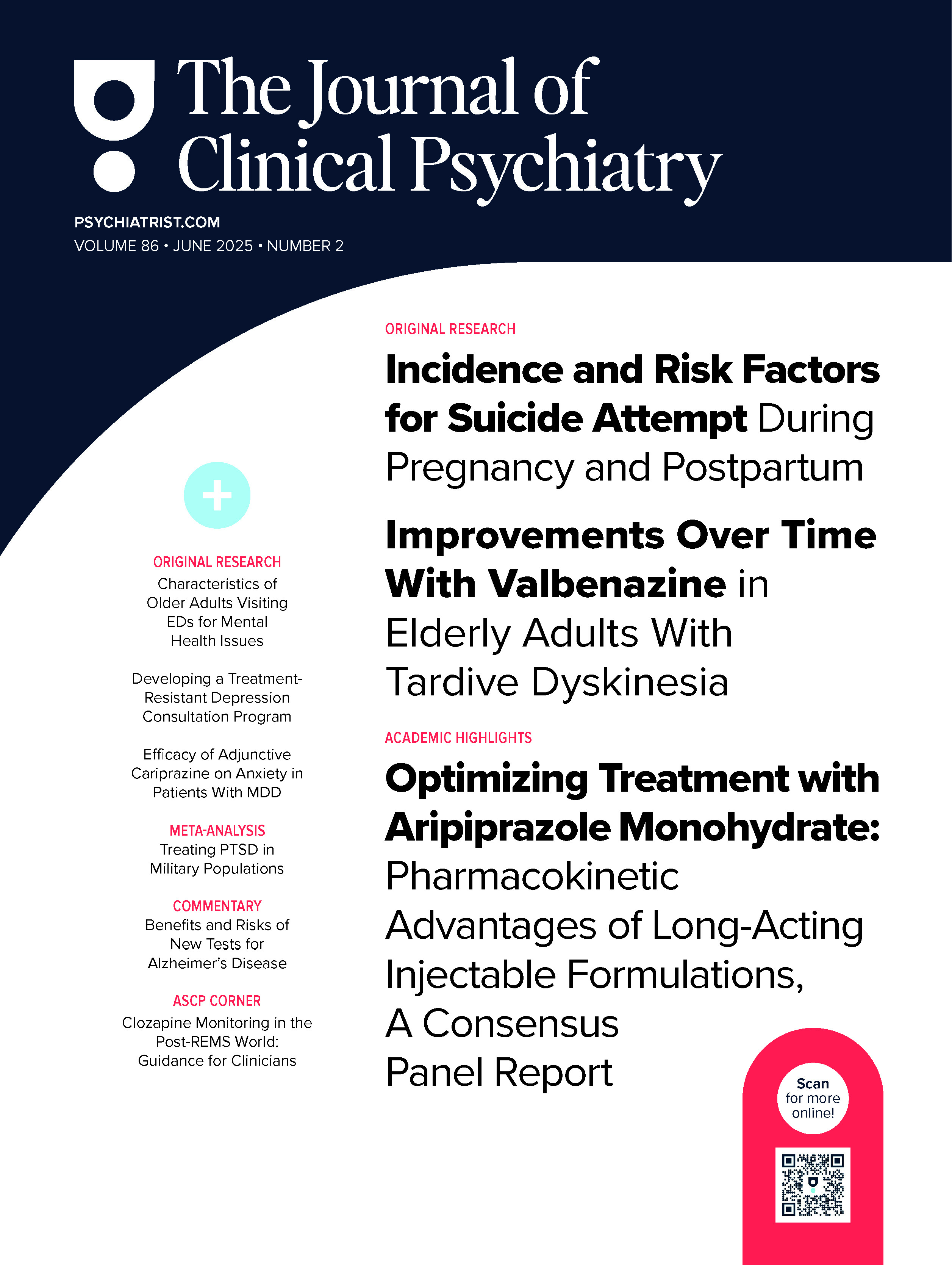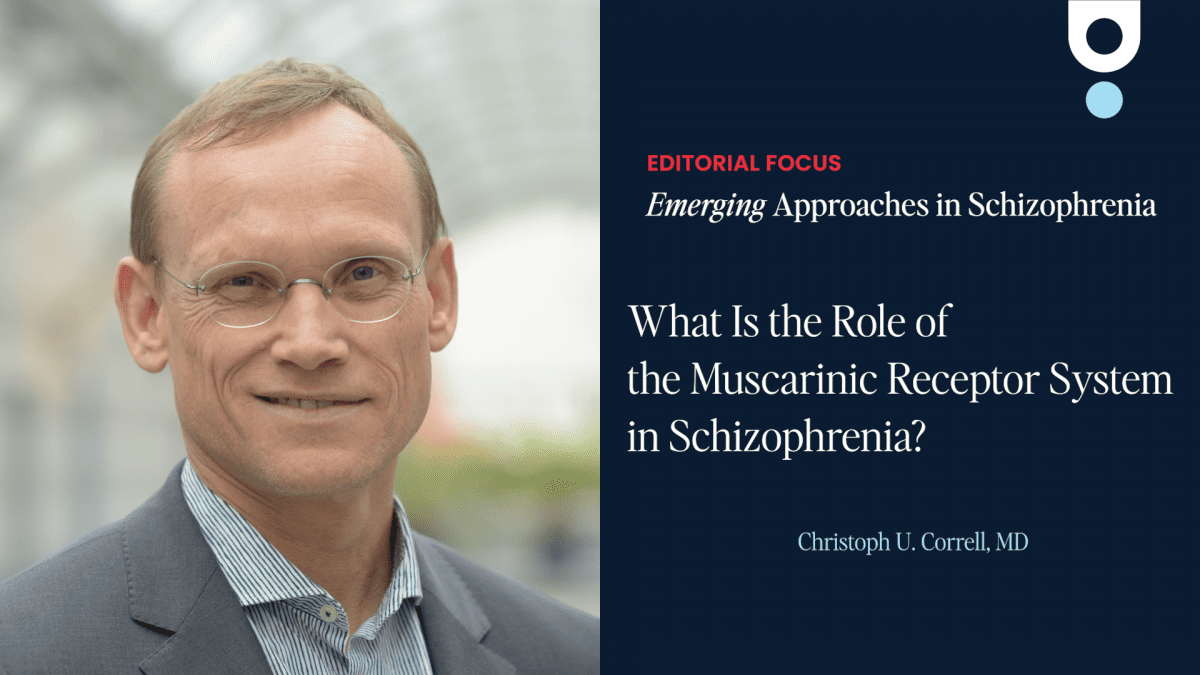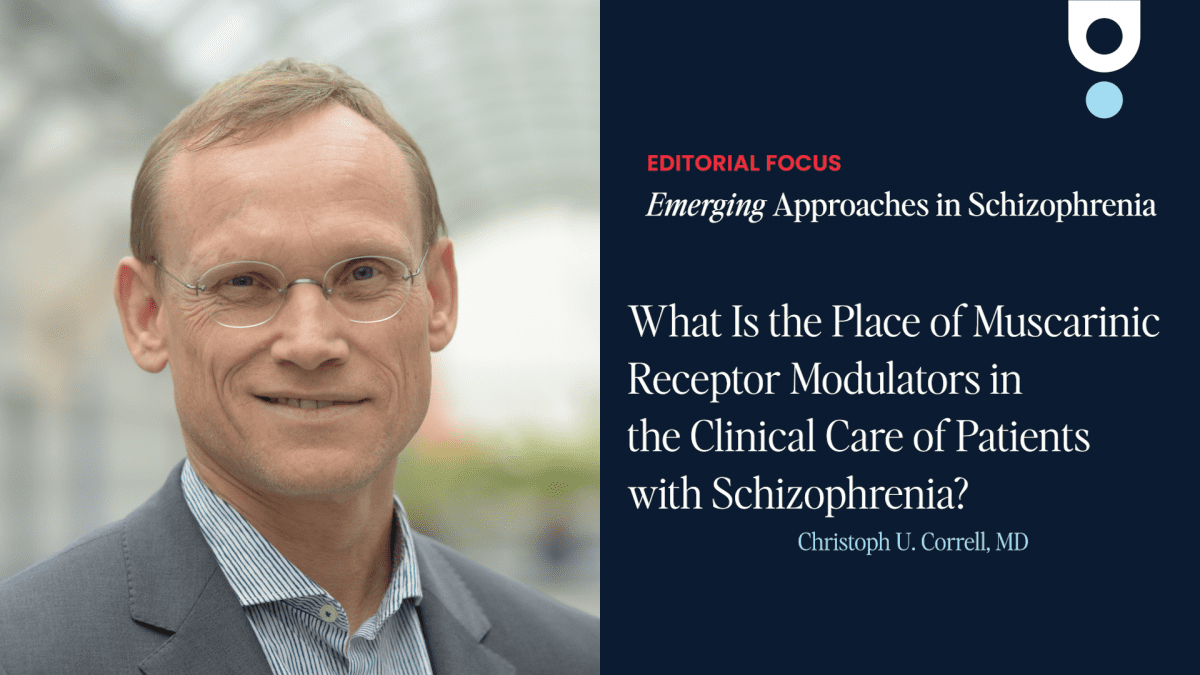Christoph Correll, MD
Professor of Psychiatry and Molecular Medicine
The Donald and Barbara Zucker School of Medicine at Hofstra/Northwell
Hempstead, NY
Christoph Correll, MD, Professor of Psychiatry at the Zucker School of Medicine at Hofstra/Northwell, Hempstead, New York, and Chair of the Department of Child and Adolescent Psychiatry at Charité University, Berlin, Germany. Dr. Correll is an internationally recognized expert in schizophrenia and related disorders, with a focus on the identification, characterization, and treatment of severe psychiatric conditions.
In this video, Dr. Correll discusses the role of the muscarinic receptor system in schizophrenia, exploring its impact on cognitive and functional outcomes. He examines the potential for targeting muscarinic receptors as part of novel therapeutic approaches to address unmet treatment needs in schizophrenia. Dr. Correll highlights how understanding these pathways can lead to more effective and personalized treatment strategies.
This presentation is part of the Emerging Approaches in Schizophrenia Editorial Focus collection from Psychiatrist.com News. The collection focuses on the latest advances in schizophrenia treatment, with an emphasis on emerging therapies that go beyond traditional dopaminergic approaches.
Transcript
[00:12 – 00:55] Understanding the Muscarinic Receptor System
Hello, I’m Dr. Christoph Correll, and today I’ll be talking about what is the role of the muscarinic receptor system in schizophrenia. Let’s first understand the acetylcholine system. There are two different receptor types.
There’s the nicotinic receptor, which is ion-gated, a channel receptor, and is fast for synaptic transmission. We’ll not be talking about that today. But there’s also the muscarinic receptor system.
That is a G-protein-coupled receptor and has second messenger cascades. There are five different members of the muscarinic receptor family. And we have the odd-numbered ones, M1, M3, and M5, and those are postsynaptically sitting receptors.
[00:56 – 03:02] Modulation of Muscarinic Receptors in Schizophrenia
And when they are stimulated, there is a stimulatory or go signal. The even-numbered receptors, M2 and M4, on the other hand, are presynaptic receptors, and those are autoreceptors. When autoreceptors are stimulated, it’s a stop signal.
We also need to understand that the muscarinic receptor can be either stimulated by the orthosteric receptor, which is the pocket where acetylcholine or the endogenous neurotransmitter goes, or it can be modulated by the allosteric pocket. And there we can have positive allosteric modulators. That’s important because the orthosteric site is very much shared in the configuration by the five muscarinic receptors.
So there can be some spillover into other receptors, and it’s not as specific to just one or two of the muscarinic receptors. The allosteric site, on the other hand, is very specific. And when you have a positive allosteric modulator, then acetylcholine binds more tightly and transmission on that receptor is strengthened.
Why are we talking about the muscarinic receptor system in the context of schizophrenia and in the future maybe even other psychiatric disorders? Because the M1 and M4 receptor are located in areas of the brain that we believe are very relevant for schizophrenia, but also other types of psychiatric disorders where there is too much dopamine in the presynaptic synapse.
[03:03 – 04:46] Historical Developments in Muscarinic Agonists
What’s the story line or the narrative of the muscarinic receptor modulation? Well, it’s actually a system that has been activated very early. In 1959, there was the first study where arecoline, which is a derivative of the betel nut, was tested in 28 patients, and 80% of patients had lucid moments, meaning that they were not psychotic.
However, this was not pursued because there was also a lot of procholinergic side effects peripherally, nausea, vomiting, and also orthostasis and syncope. In the 1990s, there was another approach to look at cholinergic activation in the frontal lobe via xanomeline . And xanomeline was tested in patients with dementia who had agitation, psychosis, but also obviously cognitive problems.
And in that study program, six-month study, xanomeline, an M1M4 agonist, was effective for treating cognitive dysfunction in people with dementia, but also had a very strong effect size, not only for activation and agitation, but also psychosis. However, again, without titration or peripherally restricted anticholinergic, there were too many side effects to carry this forward. In 2008, there was a very small study with xanomeline and schizophrenia, 10 patients on xanomeline, 10 patients on placebo, and both for cognition and psychosis, xanomeline, the M1M4 agonist, was superior to placebo.
But again, the side effects were such a limiting factor. It took a while until there was the idea to actually isolate the central efficacy of xanomeline by adding a peripherally restricted anticholinergic, trospium, to xanomeline, creating xanomeline-trospium combination. And that has recently been tested in three studies and, well, they were all positive.
[04:47 – 06:26] Mechanisms of Muscarinic Agonism in Schizophrenia
There was also safety. And on the 26th of September, 2024, the combination of xanomeline-trospium was approved by the FDA as the first member of the muscarinic class, having muscarinic agonists. How does muscarinic agonism work as an antipsychotic? With the M1M4 stimulation, there is a top-down and bottom-up antipsychotic effect.
Let’s talk about the bottom-up first. The M4 receptor is an auto-receptor, as I mentioned. When it’s stimulated, you’re decreasing acetylcholine, so you’re decreasing the input of acetylcholine from the hindbrain to the midbrain.
Acetylcholine and dopamine are friends. When acetylcholine is up, dopamine is high. As we’re now stimulating M4, the auto-receptor, we’re decreasing acetylcholine in the midbrain, which then decreases acetylcholine-stimulated dopamine in the associative striatum, where we believe psychosis resides.
At the same time, there’s a cholinergic interneuron in the associative striatum, and when here, acetylcholine is reduced by M4 stimulation, we also have a decrease in presynaptic dopamine transmission. That’s the bottom-up antipsychotic effect. We also have a top-down effect, where the M1 receptor stimulation stimulates GABA, which is the brake in the system, an interneuron, which then decreases the gas pedal, which is glutamate, and the glutamate input into the ventral tegmental area, again, stimulates dopamine.
So by stimulating GABA, reducing glutamate, we’re reducing dopamine input presynaptically in the associative striatum. Those are the two antipsychotic mechanisms that decrease presynaptic dopamine, where we believe the problem in schizophrenia lies, whereas our current or previous antipsychotics have always been a postsynaptic blockade answer to a presynaptic problem. Since the M1 receptor also is in the frontal lobe, stimulation there can increase acetylcholine in the frontal lobe, which then can lead to pro-cognitive effects.
And this M1 stimulation, actually, by stimulating GABA, decreasing glutamate, also restores the EI imbalance, the excitation inhibition imbalance that we believe underlies schizophrenia, at least in subgroups of patients. Thank you for your attention, and I hope that this was information that is useful to you




